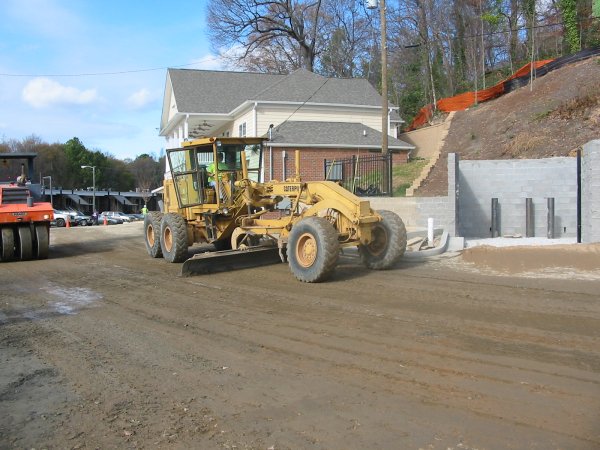Full-depth reclamation is an asphalt pavement recycling process in which failed pavement and base materials from an existing roadway/parking lot are pulverized, mixed with cement (or lime) and water, and compacted to create an improved stabilized base for a new paved surface.
There are many benefits of this relatively new process. It saves money and resources by using existing materials instead of hauling new aggregate in and old material out for disposal. Truck traffic is greatly reduced and there is very little to no waste.

The final result and benefit to the customer is that the recycled base will be much stronger, more uniform, and more moisture-resistant than the original base. This means the pavement will last longer and require less maintenance along the way. By recycling the pavement and base materials on site, costs are reduced by 25-50% over removing and replacing the old material.
Asphalt full-depth reclamation is ideal for pavements that are severely distressed, especially those suffering from base/sub-base problems, where an asphalt overlay or perma-flex overlay is not an option. Indicators that the failed pavement might be a good candidate for this process include severe alligator cracking, and large and numerous potholes that exceed 15%-20% of the total surface area. This type of severe distress indicates that the primary problem exists below the surface in the base and/or subgrade.
How the Full-Depth Reclamation Process Works
Once determined that a pavement is a good candidate for full-depth reclamation, it must be evaluated. This evaluation is to determine what materials make up the current pavement structure and what mix design will be used in the reclamation process. To do this samples must be taken. Designing a proper mix is critical to obtaining a good final product. Be sure to consult your material supplier or mix design documentation as it is beyond the scope of this intro.

After the proper mix design is determined, including the depth required for the new base (usually 6-12 inches) the pulverizing machine will crush and blend the existing pavement and some of the underlying material. Going deep into the underlying material ensures that any deep cracks will be eliminated that would otherwise lead to reflective cracking.
The material is then graded and shaped to the desired elevation and the stabilization reagents (concrete or lime in dry or slurry form) are placed over the top. Immediately after the concrete or lime is applied, it is mixed within the reclaiming machine with the recycled pavement aggregate and water. Once the cement is mixed with water and the pulverized base material, the maximum time allowed for compaction is two hours.

Finally, the reclaimer is followed by grading, spreading, and compaction equipment working in the same manner and sequence as if aggregate base materials were delivered and placed at the project site.
After the base preparation has been completed, a pre-determined thickness of hot mix asphalt is placed.
More detailed information on the process can usually be obtained through your states DOT website or visit view this document from the CP Road Map website.
http://www.cproadmap.org/publications/MAPbrief_Jul-Aug_2011.pdf



